It is our pleasure to welcome Taylor Keen, author of Rediscovering Turtle Island: A First Peoples’ Account of the Sacred Geography of America, as our featured author this month. In his book, Taylor, an Omaha Tribal member, Cherokee Citizen, and teacher, draws on firsthand Indigenous accounts, extensive historical writings, and his own experience to comprehensively reimagine the ancient and more recent history of this continent’s oldest cultures. Taylor’s deep personal connection to the history and mythology of the First Peoples of the Americas has helped him to rediscover and give renewed voice to the immemorial cultures of Turtle Island, revealing an alternative vision of the continent’s geography and the significance of the past and future presence here.
In his article, Taylor offers insights into sacred symbolism and mythology in Ancient Indigenous American cultures—knowledge embedded in the complex geometric earthworks these cultures produced. These earthworks mirror the skies and point to the time of the first people on Turtle Island.
Interact with Taylor on our AoM Forum
THE TRUE ANTIQUITY OF THE AMERICAS
Whether you recognize us by the terms American Indian, Native American, First Peoples, or Indigenous, we are one of the most misunderstood topics in the United States of America.
Most of you were probably taught that Columbus discovered America (maybe the Vikings), that we crossed over on the Bering Strait during the Ice Age no more than 15,000 years ago, and that Indigenous Peoples had the chance to flourish here, but we killed off all of the mega-fauna and somehow just handed the keys to European settlers when they arrived, admitting failure and defeat as inferior and barbaric savages.
That narrative is false, but the truth is much more interesting. Human migrations are never simple.
With footprints being carbon dated in White Sands, NM, at over 23,500 YPB, the Clovis First Theory is debunked, although many archaeologists still hang on to the simplistic theory, not ready to acknowledge that Indigenous peoples may have an equal, if not greater provenance of the time continuum of humanity than their own, dating back tens of thousands of years, if not dramatically more.
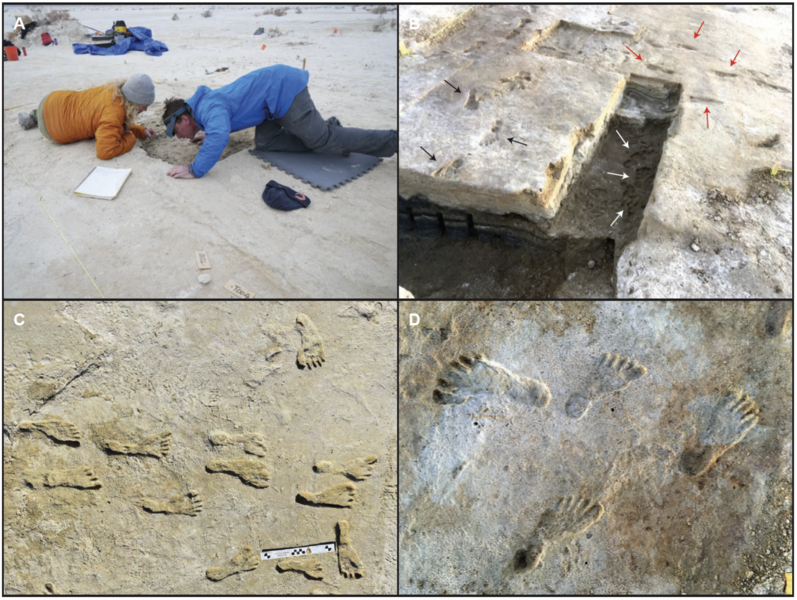
Figure 1:Footprints from 23,500+ YPB, White Sands NM. Wikimedia Commons (Public Domain)
Metis / Cree Indigenous scholar Dr. Paulette Steeves, in her work “The Indigenous Paleolithic of the West”, examines many paleolithic sites from between 11,000 YBP and 44,000 YBP but believes it is a matter of time until a site rivaling 130,000 YBP1 or older is discovered— whether the fields of anthropology and archaeology would ever acknowledge it is another matter. Graham Hancock’s “America Before” details the saga of the battle by mainstream academics to limit the true history of Indigenous Peoples’ migrations. I wonder what may have happened over that vast amount of time, including arriving and surviving in the Americas during the last glacial period, comet strikes and cataclysmic floods. An American Ancient Apocalypse.
CAHOKIA: An Ancient Urban City 1,050-1,350 CE
Here is a truth that dispels the myth of the nomadic savage: Mississippian societies had built an urban city and a national economic trading empire called Cahokia, near present-day St. Louis in the years starting around 1000 CE and lasting until 1350 CE. At the city center were 15,000 to 20,000 Cahokians, and another 150,000 to 200,000 in the outlying areas. Multiple language groups were spoken, so there was no singular language, and the civilization included mass agricultural lifeway systems, corn, bean and squash (the 3 Sisters) or agricultural complex out of Mesoamerica some 10,000 years ago.
Besides mass food, the other side of the equation is a national religion. Today, arguably, the national religion of America is Christianity. In ancient Native America, the religion was the story of the first Indigenous humans, First Father (White Plume) and First Mother (Mother Corn, Earth Mother, and the Woman Who Never Dies), their children, one of whom reveals himself as Redhorn, from the Upper Realm who is part God and part Human (sound familiar?) and is the soteriological savior of humanity.
From this lineage come the Thunder Twins, who share the powers of both the Upper and Lower Realms. They ultimately come to save their slain grandfather, White Plume, who defiantly endeavored to the Lower Realm for power. With the Twins’ help, White Plume / First Father is resurrected, and his ascension and resurrection become the model for all others to be saved and have eternal life.
Besides a truly American ancient economic trading civilization over a thousand years ago (the 3rd largest city in the world at the time), the ancient earthen works of Cahokia employed massive civil engineering, architecture, sacred geometry and algebra, and a conception of Earth and Sky to rival the Greeks, Egyptians and the Sumerians.
From this relationship of Earth to Sky (Middle Realm to Upper Realms), ancient Indigenous peoples looked to the stars as the basis for understanding the cosmos, developing stories from the movement of constellations and the heavens. Civilizations across humanity looked to the stars to teach the people the truths as they saw them that would become legend and lore for the ages.
Indigenous societies at places like Cahokia saw incredible explosions of populations around food and religion, originating from the stories they created and shared. These societies also witnessed the collapse of their empire, just as the Romans who witnessed the fall of Rome did. The United States is not yet 250 years old until 2026. Cahokia lasted 350 years.
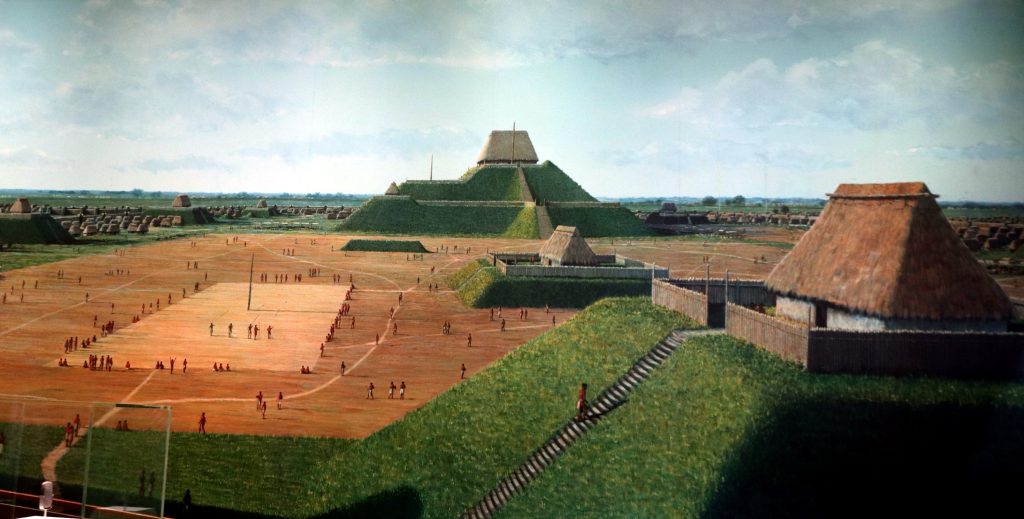
Figure 2: Cahokia, UNESCO Reconstruction. Creative Commons (CCBY2.0)
Here is an excerpt of a narrative that I created after all the research on Cahokia. My copy editor told me that I should change some of the anthropology writing and turn it into a story. Here is the beginning narrative:
CAHOKIA CITY CENTER, SUMMER OF 1054
The Pilgrim is now calling himself Honga (“The one from whom we all descend”), after one of the heroes portrayed on top of the platform Mound that he witnessed when he first came to Cahokia. Honga was one of the Thunder Twins of the Sun, the first grandchildren of First Father and Mother Corn, the sons of Morningstar.
Honga was trying to focus on his first visit to the theater platform mound, trying to recall the saga he saw when he first arrived. This time, as he watched the pageantry in front of him, there were thousands more people to witness it, who had come when the bright new star had appeared in the sky, twice as bright as any other star and even visible during the day. The priests had said many people would come to see the story of First Father’s ascension, and now they were here.
The saga of the Twins was his favorite part of the new religion he was learning at Cahokia.
Honga was fascinated by the whole story of the First Family. He made sure to go through the story many times in his head, as he knew he would be asked to recount it for his home farming community.
Honga thought through the whole story and began reconstructing in his mind the story he had seen at the ceremony whenever he worked on the earthen works with his hands. It brought him a peace and a calm when he let his mind relax, and he would go over and over the story in his mind:
First Father was from the Upper Realm, where the Thunder Beings lived, their emissaries the Thunderbirds, whose home was the great cedar trees way in the West. In the earliest days, there was only the Upper Realm and the Lower Realm, with no Middle Realm, which is the realm we human beings occupy. The Sun and the skies belong to men, and thunder and fire are the working tools of the Thunder Beings and of men.
The Lower Realm was ruled by the Underwater Spirits, chief among them being the Underwater Panther, who ruled all the water spirits. The water, the moon, which is filled with the Water of Life, belongs to the spirit of Mother Corn, or First Mother, and all mothers. Some of our stories say the Creator made First Mother from a cob of corn planted in the Upper Realm.
First Father and First Mother’s union in the Upper Realm produced ten sons and two daughters, Evening and Morning Star. One of these daughters gave birth to the Thunder Twins.
First Father was curious about the Lower Realm and sent two Spirit Wolves, his emissaries, down to explore on his behalf. The two Spirit Wolves were captured and eaten by a great Beaver Water Spirit, and First Father, enraged, foolishly went down to the Lower Realm to redeem his Spirit Wolves. Some say he gambled with the spirit for his agents, and some say they dueled. First Father lost the gamble, and the Beaver Water Spirit captured First Father’s head but sent his lifeless body back to the Upper Realm, where it could never complete the Journey of the Souls back to its original dwelling place in the Seven Sisters constellation without the complete body intact.
First Father’s grandsons, the Thunder Twins, sought to avenge the loss of First Father. They journeyed to the Lower Realm after a battle with the Giants, and they bested the Beaver Water Spirit and brought back the head of First Father so he could ascend to his celestial home and complete his Journey of the Souls.
This story and the ascension of First Father became the pilgrimage of all the souls here in the Middle Realm. The journey of First Father from the Upper Realm to the Lower Realm created a rift between the two realms, and Grandmother Spider wove our world with her silk.
This story is what Honga witnessed on one of the platform mounds on his first journey to the city center. Honga watched as each of these heroes was portrayed in a grand play for all to see. How revered would Honga be if he could portray First Father or one of his Twin saviors? Through the salvation of First Father, each of us in the Middle Realm could find eternal salvation and ascension to the Upper Realm and our home among the stars.
SERPENT MOUND: An Homage to Earth and Sky
Many thousands of years ago, ancient Indigenous peoples looked to the skies and witnessed the constellation of Scorpius moving towards the rising sun on the summer solstice, and the legend of “the serpent eating the sun” was born.
Around 2,000 years ago, in the year 320 BCE, Indigenous peoples collectively built the iconic and spiritual Serpent Mound near the epicenter of ancient megalithic earthen work complexes not far from present day Columbus Ohio.
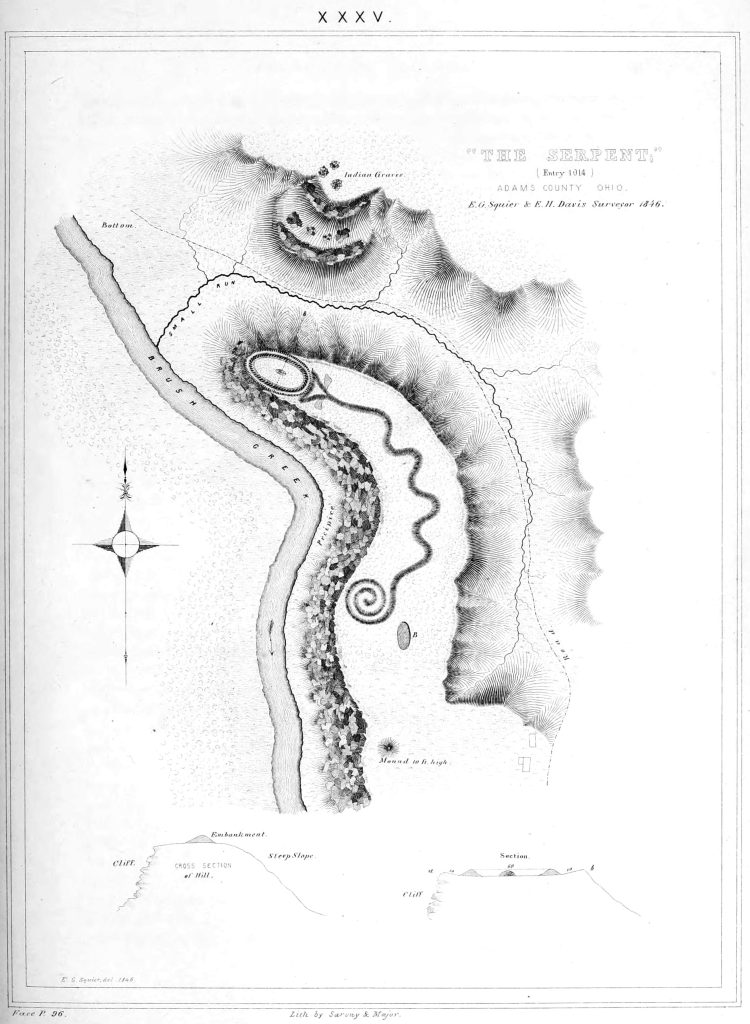
Figure 3: Wikimedia Commons. Serpent Mound Plate, XXXV, Squier and Davis, “Ancient Monuments of the Mississippi Valley” 1848, Smithsonian. (Public Domain)
In the iconic Indigenous cosmic migration creation story, the Earth Diver myth, the Journey of the Souls begins with the Seven Sisters constellation, or the Pleiades, and travels across the Dark Rift of the Milky Way and finds Earth via Venus, our closest planet. In many tribal traditions, there is a keeper at the gate who does or doesn’t allow a soul to pass and to return home. In some cases, a Great Serpent gatekeeper guards the path towards the Realm of the Dead.
The Great Serpent Mound and the ensuing solar alignments were in the approximate time 300 BCE according to archeoastronomy anthropologist Dr. William F. Romain in his article “Adena-Hopewell Earthworks and the Milky Way Path of Souls”. Tracing the Relational: The Archaeology of Worlds, Spirits, and Temporalities. University of Utah Press, Salt Lake City, 2015.
Thus, we find a connection between the Great Serpent Mound, the Great Serpent as the gatekeeper of the Realm of the Dead, and all three within the constellation of Scorpius. Besides being connected through the Indigenous oral traditions of the eastern Woodlands customs, Romain offers an enticing theory related to the stars. The constellation of Scorpius and its neighbor star Antares offer a stellar version of the Great Serpent.
Scorpius rises out of the Southern Hemisphere or Lower Realm and moves up into the Northern Hemisphere or Upper Realm, traveling along the ecliptic (annual path of the sun) and slowly rotating clockwise, until by the end of the summer, Scorpius crosses over to the Lower Realm once again, but this time almost catching the sun. Today, many tribes still recount this act in our great stories of the Serpent attacking the sun.
THE NEWARK EARTHEN WORKS
The Newark Earthen Works cover more than four square miles of a river valley nestled between Racoon Creek and the North and South Forks of the Licking River. We can see from Figure 4 the 1860 Wyrick Map of the Newark Earthen Works, the pinnacle of the mound builders of the Adena and the Hopewell phases. Below, we see an illustration of two simple shapes from this work in the upper left portions of the earthen work. Note the round Observation Circle adjoining the Octagon. Astronomer John Eddy first discovered the alignment of the earthen works’ axis to the moon’s maximum north rise in 1978. Subsequently, Ray Hively and Robert Horn discovered the rest of the lunar cycles of the Newark Earthen Works in 1982.
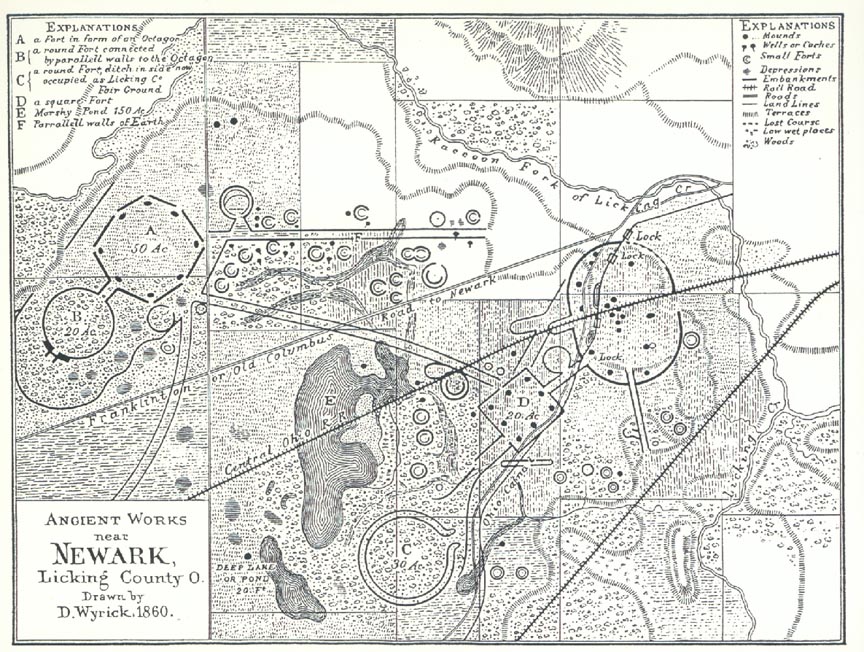
Figure 4: 1866 Wyrick Map of Newark Ohio, Wikimedia Commons (Public Domain)
The Great Circle and Octagon are aligned to chronicle the movements of the moon to its minimum and maximum moonrise and moonset in the north and the south every 18.61 years due to the slow precession of the moon’s orbit. The Wyrick Map of the Newark Earthen Works 1866 provides a glimpse of its ancient glory. Note the Great Circle, one of eight sites in the Hopewell Ceremonial Earthworks, designated a UNESCO World Heritage Site in 2023.
The Newark Earthen Works, in the words of Squier and Davis in their chapter “Sacred Enclosures,” are described as “so complicated, that it is impossible to give anything like a comprehensible description of them.” The Newark Earthen Works are complicated, but as we take one perspective at a time, it is easier to digest it.
The Newark Earthen Works and of the Great Circle and an observatory mound as described by Dr. Romain in “Adena-Hopewell Earthworks and the Milky Way Path of Souls”, Tracing the Relational: The Archaeology of Worlds, Spirits, and Temporalities. University of Utah Press, Salt Lake City, 2015. The Great Circle and the “Thunderbird Mound” are oriented to the minimum moonrise in the north at 67.5 degrees. Also, there is a summer solstice sunset observation orientation from the entrance of the Great Circle over the Observatory Circle. Beyond the Octagon and the Observatory Circle, we have the Great Circle, Wright Square, the Ellipse, Salisbury Square, Geller Hill, and ultimately, the Great Hopewell Road.
While a natural part of the landscape, Geller Hill is located a mile southwest of the Observatory Circle and Octagon earthen work and is in the line of sight of the Newark Earthen Works complex, and an important component of the works.
By connecting these three sights, we end up with an isosceles triangle, with the two earthen works having the exact same angle, with the corresponding sides equaling 7 HMU or 7,378 feet. Incidentally, 1 Hopewell Measurement Unit is also equal to the diameter of the Observatory Circle (so 1 HMU was used to design the observatory circle). Also, with the Octagon, each of the sides is one HMU. From the vantage point of Geller Hill, on the night of the moon’s maximum moonrise, an observer would see the moon rise precisely between the two adjoining works.
This line of a moon rise illustrates the triangular alignment of the Great Circle, the Observatory Circle, and Geller Mound is oriented to the moon’s maximum moonrise. “Adena-Hopewell Earthworks and the Milky Way Path of Souls”.2
In the same vein as the Observatory Circle and the Octagon, the Ellipse at Newark also seems to incorporate archaeoastronomical elements. Romain has noted that at the cluster of 17 mounds above Wright’s Square, if an ellipse were drawn over the cluster, based on a square of 1 HMU, the resulting diagonal axis would point to (1) summer solstice sunset and (2) the ground trajectory of the Milky Way on the night of the summer solstice, following the sunset. Recall that this is the second of the summer solstice observation points within the same complex.
From here, we advance to the Great Hopewell Road. The Hopewell Road is not a typical road, as Romain deduces with cross-sectioned lidar that it was a concave pathway with walls built up on either side. Similar concave pathways with walls are found at the Portsmouth, Mariette, High Bank, Hopeton, and Fort Ancient sites. In each of these cases, these “parallel walls” are all lined up with solstice azimuths.
Amazingly, on the summer solstice when the Milky Way is at its brightest, the Hopewell Road and the trajectory of the Milky Way mirrored each other, extending from the northeast at an azimuth of about 30 degrees, heading across the sky, to finally plunge in the southwest at an azimuth of about 210 degrees.
This iconic event each summer solstice allowed ancient Indigenous adepts or initiates in the mysteries school to walk along the Great Hopewell Road and to have the Milky Way rise directly in front and then overhead the observer. Nothing else would better mimic the “Journey of the Souls” than this earthly experience.
To complicate the rarity of these events transpiring, the trajectories of the sun, moon, and stars all had to line up. First, once every nine and one-half years, either the Octagon or the Great Circle came into alignment with the moon’s maximum north or minimum north limit. Next, the “date of the summer solstice narrowed the target time down to the month and day within the designated lunar year. Nightfall was the final tick of the clock”, and at sunset, the sky above the Hopewell Road at one end filled with the Dark Rift of the Milky Way, and by the time it passed overhead, one could walk along with it above one’s head, and by the time you finished on the walking journey, it had descended out of the sky over the horizon and out of sight.
What does all this mean? To answer that question, we need to review the cosmology defined elsewhere in this work. Specifically, we will remember the Upper Realm and the Lower Realm, with the Tree of Life as the axis mundi, the Upper Realm as the sky realm, and the Lower Realm often as the watery world of the Underwater Serpent / Panther. And recall that the Journey of the Souls is the soul’s astrogenesis journey from the Seven Sisters constellation of Pleiades, along the Dark Rift of the Milky Way, guided by the Morning Star / Venus (the closest planet to Earth) to our home here on Earth. And then, when our journey is complete, we return on the same path.
Thus, the keepers of the Newark Earthen Works would chronicle the movements of the stars until they knew the exact year, month, day, and time when all the celestial bodies lined up in a way that allowed the Upper Realm to mirror itself on the landscape of the Earth Mother, and thus allow us to live the precept “as above, so below.” But the significance of the Dark Rift of the Milky Way in the Journey of the Souls is important, the one act of the faithful: “As in heaven on Earth.”
The construction of the Newark Works was the culmination of the ancient builders over 2,000 YBP and occurred near the end of a great building period, employing the learnings and advancements of the era.
The following is an excerpt of a story I included in my book, Rediscovering Turtle Island, about how, as an Indigenous person, I imagined the Newark works would have been utilized by the Indians of the era.
THE CEREMONY OF CEREMONIES
The two initiates have been in teachings for the better part of four years. They have been coming every season, governed by the cycles of the moon, sun, and stars. The two initiates have seen the Grand Ceremony once, years before, but only from afar and from one of the visitation mounds that was designed for visitors. Now they stand at the beginning of the Great Road, after having watched the sun rise and set from different vantage points in the Great Circle and the Great Octagon.
The two initiates have been through many ceremonies like this, but not to the same degree as the Ceremony of Ceremonies. For years they have trained and prepared. Only once every nine years would the stars, sun, and moon line up for this grand nighttime ceremony. The teachings were the secrets of the Order, and the only way to truly understand the mound complex that lay before them was to pledge the Order and endure the trials of each teaching and attain the next rank within the Order.
There were many teachings, all translated into their own dialect of their Indigenous language. Sometimes the teachings were stories, which could last for days if not even weeks. Some of the stories were so old that they spoke of the time when most of the northern lands were frozen over and covered in ice. Some of the stories went back to the time before the beginning of time here on Turtle Island. Those stories went back before the crossing across the galaxy from the real homelands, nestled in the Seven Sisters constellation.
Many of the teachings were songs, and like the stories, some of the songs could last all night or sometimes for days and weeks. There were honoring songs for everything: from the people themselves to the Earth Mother, the Waters, the Fish, the Plant Nations, Food Plants, Medicine Herbs, the Animal Nations, the Trees, the Birds, the Four Winds, the Thunder Beings, the Sun, Grandmother Moon, the Stars, and the Sacred Mountain that sits waiting for them in this ceremony, for the Teachers who taught us all of these sacred teachings, how to remember who we really are and where we come from, and how to make it back home, the real home, on the Journey of the Souls, back to the Seven Sisters. And finally, there were the songs for the Creator, who brought them all here from across the stars.
Many of the teachings were of healing and humility. Some of the lessons were hard lessons to learn: how to make oneself devoid of ego and pain, how to embrace the smallness of oneself versus the incredible beauty and magnitude of the wonderful power of life that inhabited all of Mother Earth that was all sacred and a gift to us from Creator and Spirit. There were teachings to remind us that we are to respect the Covenants between us and the Plant Nations, between us and the Animal Councils.
I look forward to discussing this topic with all of you readers! Please join me in conversation regarding “Rediscovering Turtle Island: A First Peoples’ Account of the Sacred Geography of America”.
Taylor Keen (Cherokee / Omaha)
BIBLIOGRAPHY
Keen, Taylor. Rediscovering Turtle Island: A First Peoples’ Account of the Sacred Geography of America. Inner Traditions/Bear & Company.
Lepper, Bradley T. Ohio Archaeology: An Illustrated Chronicle of Ohio’s Ancient American Indian Cultures. Wilmington, OH: Orange Frazer Press, 2005.
Pauketat, Timothy R. Cahokia: Ancient America’s Great City on the Mississippi. New York: Viking Penguin, 2009.
Pauketat, Timothy R. and Susan M. Alt. Medieval Mississippians: The Cahokian World. Santa Fe, NM: SAR Press, 2015.
Romain, William F. An Archaeology of the Sacred: Adena-Hopewell Astronomy and Landscape Archaeology. The Ancient Earthworks Project, 2015.
———. “Adena-Hopewell Earthworks and the Milky Way Path of Souls.” In Tracing the Relational: The Archaeology of Worlds, Spirits, and Temporalities, edited by Meghan E. Buchanan and B. Jacob Skousen. Salt Lake City: University of Utah Press, 2015.
———. “Monks Mound as an Axis Mundi for the Cahokian World.” Illinois Archaeology 29 (2017).
———. Mysteries of the Hopewell: Astronomers, Geometers, and Magicians of the Eastern Woodlands. Akron, OH: University of Akron Press, 2000.
———. “Newark Earthwork Cosmology: This Island Earth.” The Newsletter of Hopewell Archeology in the Ohio River Valley 6, no. 2 (March 2005): 2–5. Romain, William F., and Norman L. Davis. “Solar Alignments at the Watson Brake Site.” Louisiana Archaeology 36 (2007, 2012).
———. “Astronomy and Geometry at Poverty Point.” Louisiana Archaeology, no. 38 (2011). Romain, William F., Edward W. Hermann, G. William Monaghan, and Jarrod Burks. “Radiocarbon Dates Reveal Serpent Mound Is More Than Two Thousand Years Old.” Midcontinental Journal of Archaeology 42, no. 3 (2017): 201–22.
Steeves, Paulette F.C. The Indigenous Paleolithic of the Western Hemisphere. University of Nebraska Press, 2021.
1 Steeves, Paulette, “The Indigenous Paleolithic of the Western Hemisphere”, p. 176. University of Nebraska Press, 2021.
2 William F. Romain Tracing the Relational: The Archaeology of Worlds, Spirits, and Temporalities. University of Utah Press, Salt Lake City, 2015.






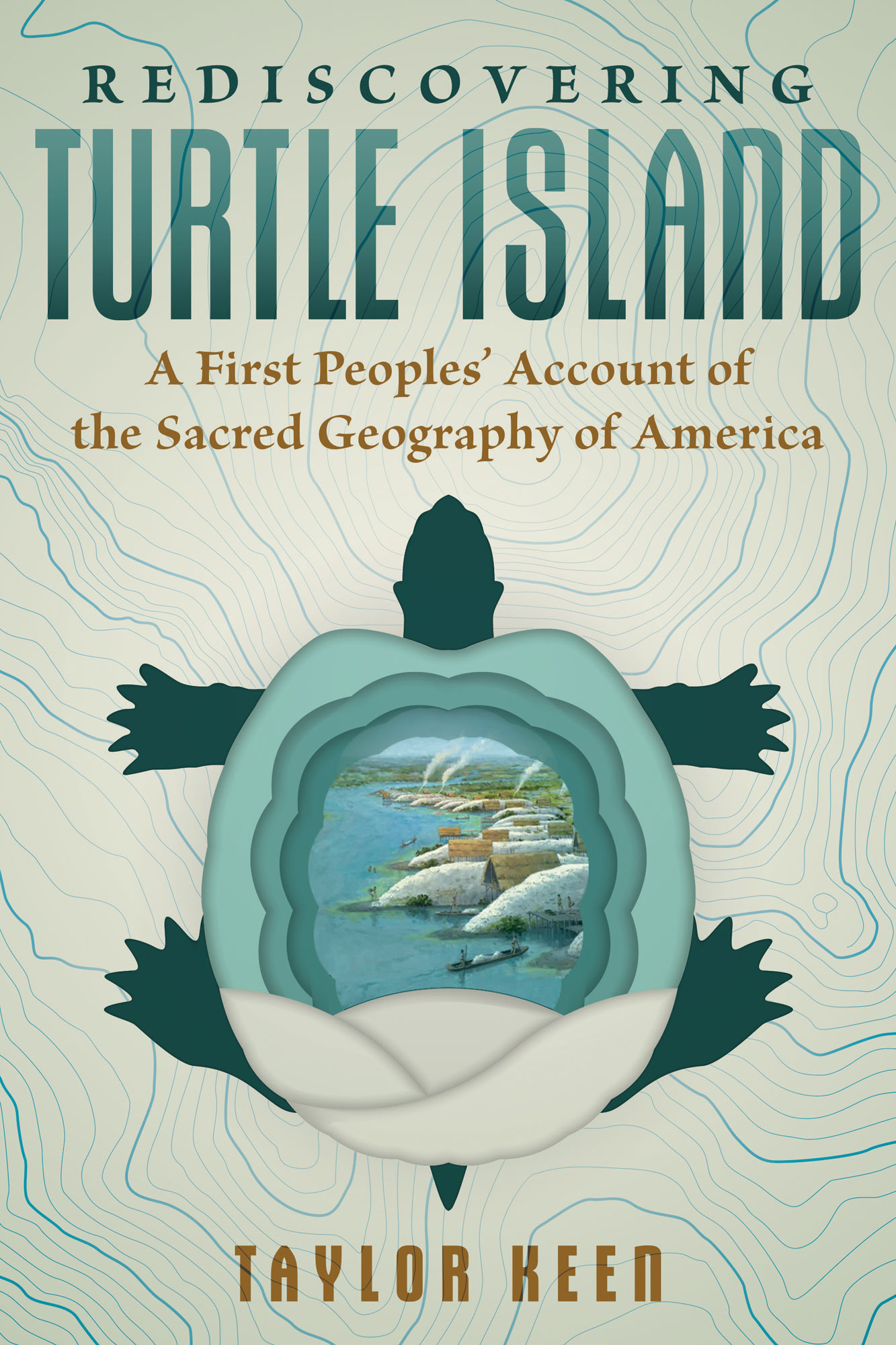
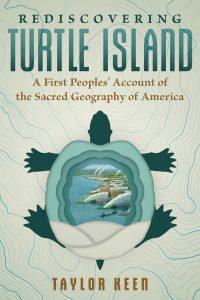
Now with every civilization usually a dark side. What your take on Human sacrifice found at one of the mounds….”Evidence for human sacrifice in the American Bottom is best known from Mound 72 at the Cahokia Mounds. Evidence for ritualized sacrifice includes the careful placement in 4 features of numerous young women in rows and layers, and in a 5th feature, the presence of both men and women, some with evidence of violent death.
Rediscovering Turtle Island 🐢 relates to the book of the sacred symbols of Mu by James Churchward. Also, there are turtle symbol located at the Marquesas Islands. The symbols were discussed by David Childress and Giorgio A. Tsoukalos on the Sentinel Episode on Ancient Aliens.
Where are all the native knowledge keepers? All I see are the names of europeans in your list. If you want to be taken seriously by our people, maybe you should involve us more,